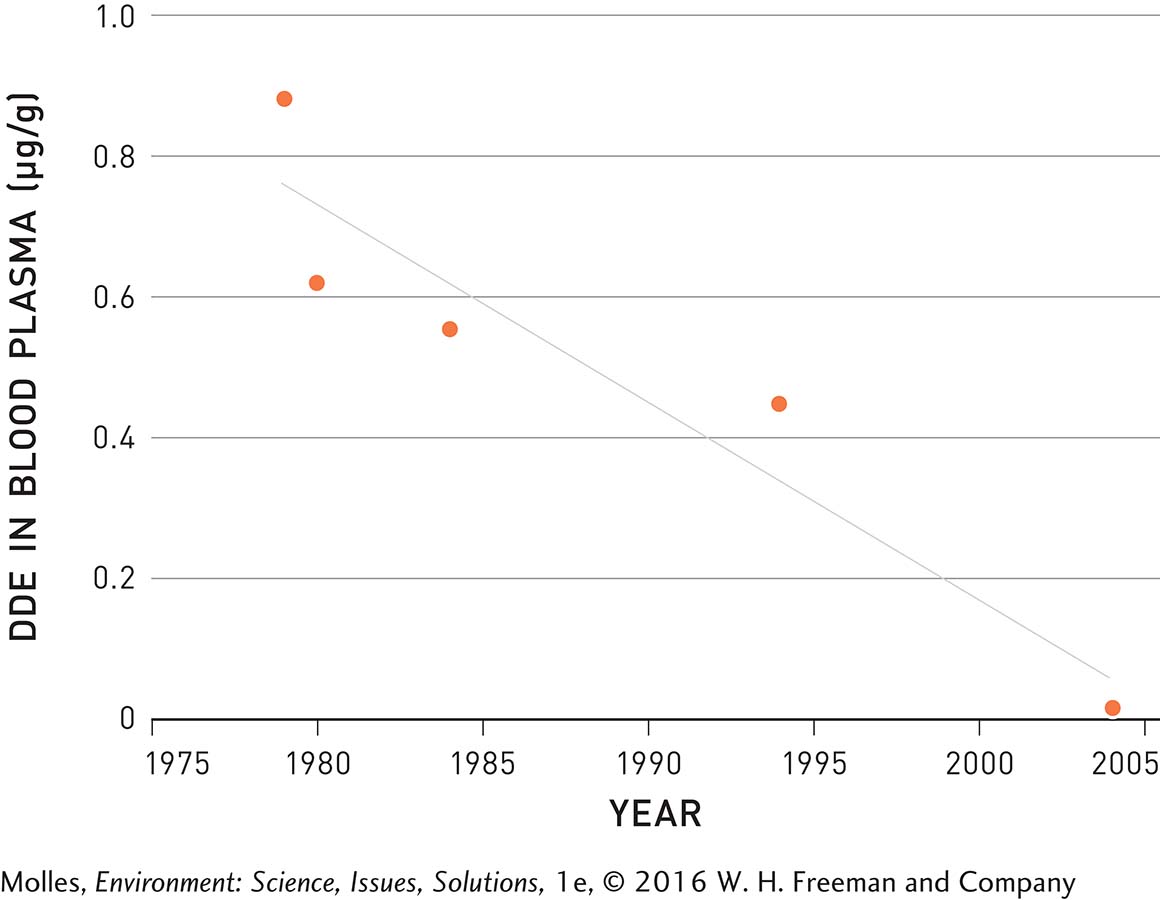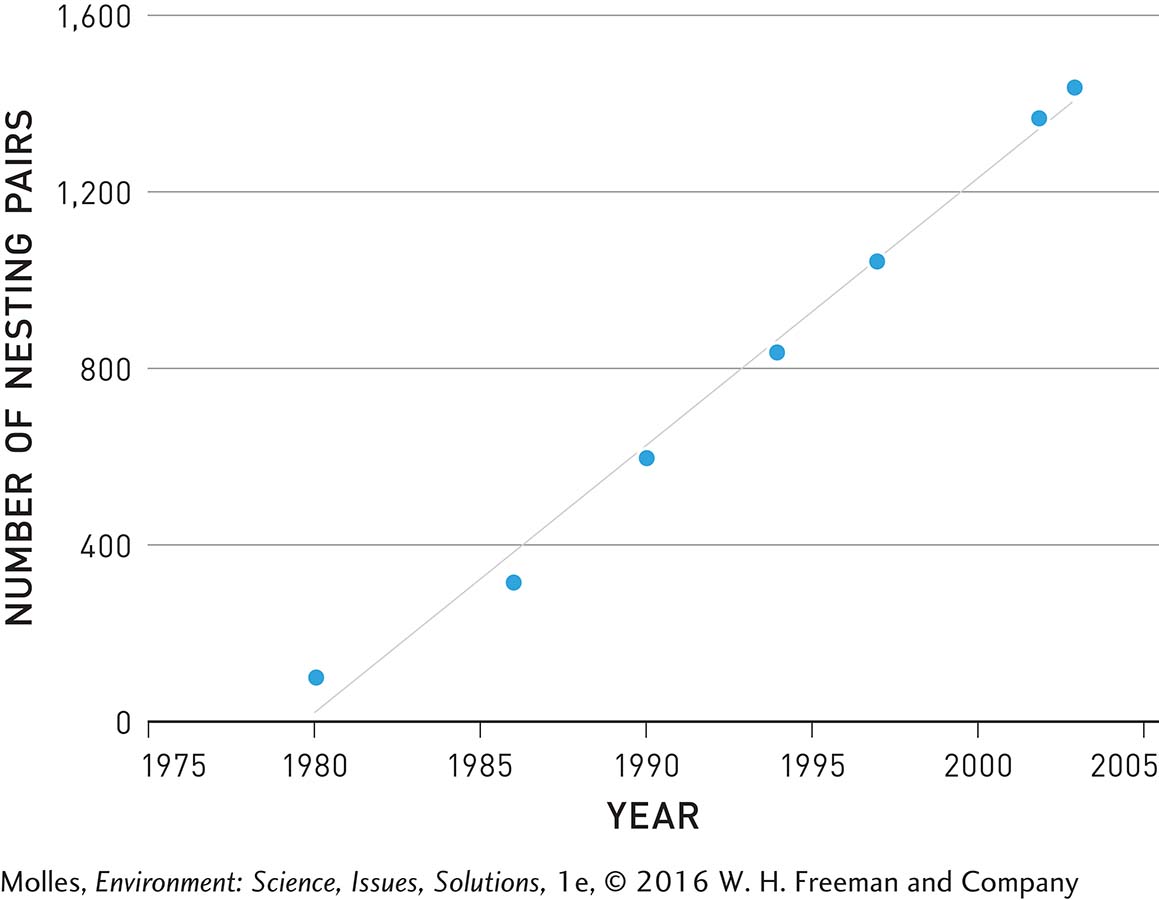3.11 Banning of a toxin and captive breeding brought peregrine falcons back from the brink of extinction

Using what you learned about population growth earlier in the chapter, predict how the pattern of growth shown in Figure 3.28 will or will not change over the long term. (Hint: Consider Figure 3.11.)
After the peregrine falcon was declared an endangered species in the United States in 1970, the greatest threat to its survival needed to be eliminated. In 1972 the United States banned the insecticide DDT, which had caused eggshell thinning. As a result of decreased DDT use in the United States, Canada, and Latin America, the amount of DDE, the breakdown product of DDT associated with eggshell thinning, has gradually decreased in the tissues of peregrine falcons (Figure 3.27). However, that was only the first step toward a solution.

To restore falcon populations, the U.S. Fish and Wildlife Service entered into a partnership with state natural resource agencies and nongovernmental organizations to establish captive rearing programs. From 1974 to 1997, these programs released more than 6,000 peregrine falcons to their historic range in 34 states. In addition, critical habitat for the peregrine falcon was identified and protected.

How would reduced genetic diversity among North American peregrine falcons between 1985 and 2007 have made the population less able to adapt to future environmental challenges?
The initial goal of the captive rearing and release program was to build the population back up to 631 nesting pairs in the United States. By the mid-

The American peregrine falcon was removed from the endangered species list on August 25, 1999, and the population continued to grow. By 2003 the American peregrine falcon population in the United States, Canada, and Mexico reached an estimated 3,005 breeding pairs. Follow-
Think About It
Why was a captive rearing program necessary? Why was a ban on DDT alone not sufficient for the peregrine falcon to recover on its own?
What were some advantages of having a cooperative breeding program for the peregrine falcon, involving federal and state scientists along with private foundations and citizens?